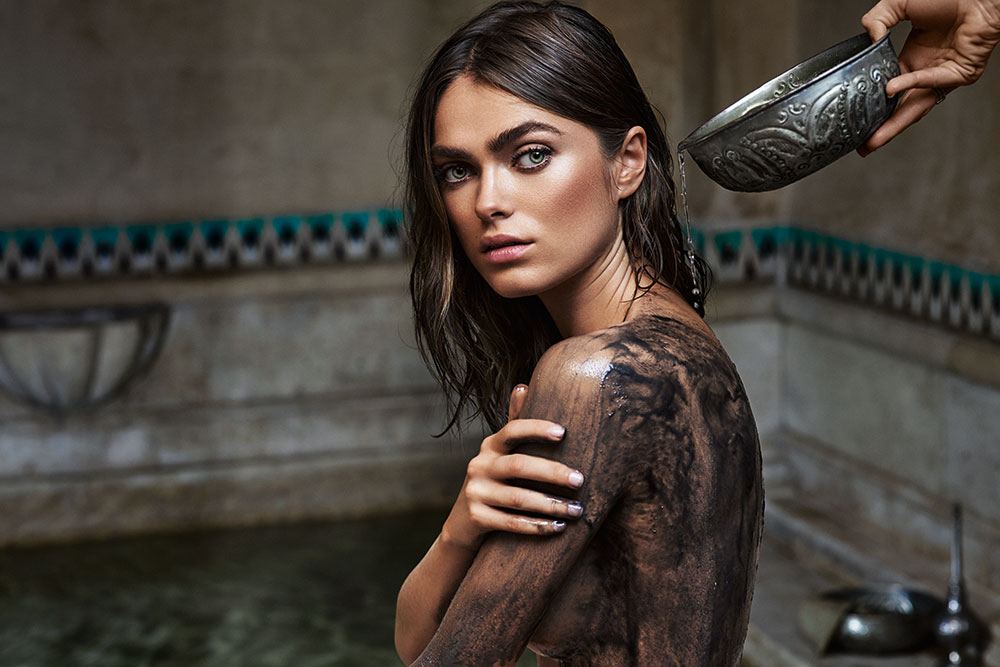5 things you never knew about hammam

‘The hammam was a building that was one enormous bath. The walls, floor and ceiling were covered in brick-shaped tiles in blue and green. We stood in a small, warm room streaked with sunlight which slanted from a window high up, almost in the roof… A large, damp, steam-clouded room opened onto another, slightly warmer, and another, and another so hot I had to yawn to catch enough breath to breathe. In the farthest room, which was cooler, there was a cold-water tap and a bucket’ — Esther Freud, Hideous Kinky
So, how did hammams influence us today?
Though the influence of the hammam tradition is evident in modern day life, it’s rarely mentioned. Bar the occasional literary recognition and characterful spa front on your nearby high street, we take for granted that our hot baths and showers are, in part, thanks to Roman, Greek and Turkish history.
The Ottomans merged the Roman bathing traditions, which involved a huge sociable bath complex, with their own Islamic-inspired routines. Unlike the Romans, they preferred smaller bathing complexes that could be used to purify before prayer. They also switched the Roman cold water pool with a running water technique that was thought to be more hygienic.
Women weren’t allowed to attend the hammams when they originated but, in time, the rules evolved to include women who were ill or had recently given birth.
Seen as an escape from home life, hammams became a community hub for all genders from all backgrounds. Far beyond a place of mental and physical cleansing, they were used for celebrations and purification rituals.
Talk us through the steps…
As is explained by Freud, the classic hammam comprises three rooms; the entrance, known as the Camekan, where you undress, change into a cloth and slippers, and prep. Next is the hot steamy room, called the Hararet, where you lie down to sweat and open your pores. It’s here you’re massaged and washed with a cloth and soap, which is washed away by clean water. Then, it’s on to the exfoliation stage where you’re scrubbed, rinsed and towel dried, before the cool room, the Sogukluk, where you relax.
5 things you didn’t know about hammams
1. It’s the longest-standing bathing tradition.
2. Hammam means ‘spreader of warmth’.
3. Women were banned from hammams at the start and it’s thought the rules only changed as Mohammed though the warmth would enhance fertility.
4. It used to be seen as a legitimate reason to file for divorce if her husband didn’t let her go to the hammam.
5. It was the only place for socialising for women who were otherwise at home.
Immerse yourself in a traditional hammam through a VR experience available in five Rituals stores (Covent Garden/Westfield White City/Westfield Stratford/Canary Wharf/Belfast) from 5th June – 9th July.
Take it home with the five-piece Rituals range, including The Ritual of Hammam Black Soap, The Ritual of Hammam Hot Scrub, The Ritual of Hammam Body Mud, The Ritual of Hammam Foaming Shower Gel and The Ritual of Hammam Body Cream, which you can win in this month’s competition, along with a hammam trip for two at The Spa, Dolphin Square in London.


